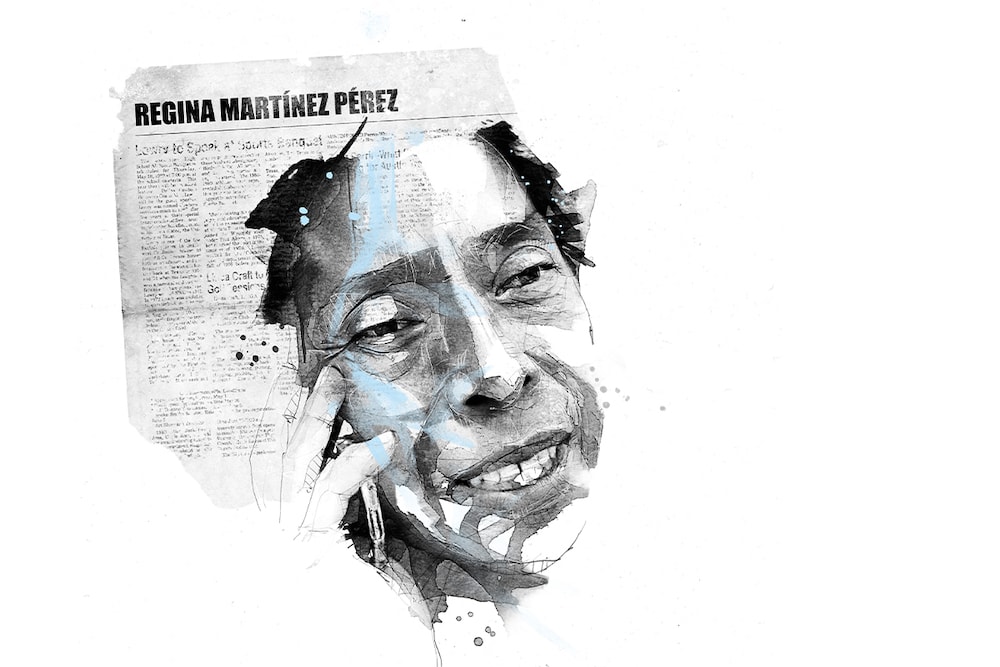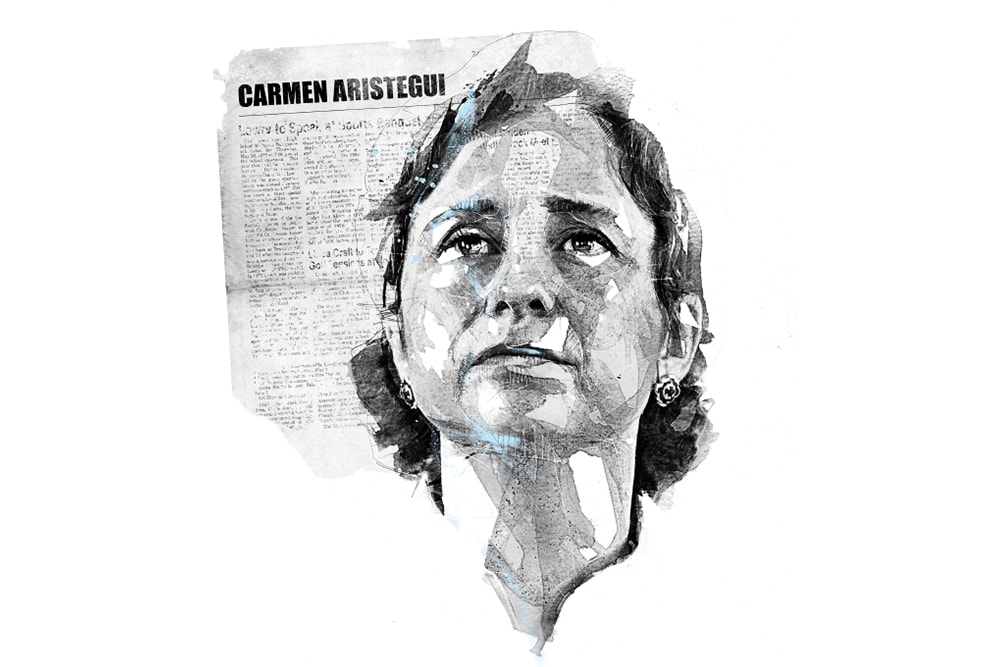A legendary journalist, a brutal murder, a deeply flawed investigation. The case of Regina Martínez Pérez is emblematic of Mexico's war on journalists and the problem of impunity. Ten years later, her colleagues and loved ones continue to demand justice, while new findings relate to the explosive stories she was working on at the time of her death.
"Regina would always dare to cover so much of the real truth in the stories we wrote about; more than me. And I’m more daring than most reporters."
Regina Martínez Pérez was an acclaimed print journalist from a humble farming background in Veracruz. She left a legacy of publications and investigations that told the stories behind the struggles and the hopes that marked the lives of most people in her home state – lives that became immeasurably harder after the rise of organised crime. She gave special attention to issues important to indigenous peoples and communities in rural areas, and documented the efforts of people in Veracruz to protect the environment.
Martínez was also a mentor for many young journalists at the time, and together with her colleagues in Veracruz, was instrumental in the advancement of journalism in the state. Before her murder, she had spent thirty years working as a reporter, covering organized crime and political corruption.
“Everything that the local press didn’t dare to publish was published via Regina Martínez,” said Jorge Carrasco, director of Proceso, the investigative weekly that Martínez was working for at the time of her death in 2012.
On the afternoon of 28 April 2012, Martínez was found dead at her home in Xalapa; she had been badly beaten and then strangled. Her murder sent shockwaves through the journalistic community in Veracruz, and former colleagues suggested – quite reasonably – that her death might have been related to her work investigating the links between state employees and local criminals. In the final weeks of her life, she had written about corrupt judges, police officers with links to drug gangs and mayors fighting side by side with gangsters in a gunfight with the army.
But despite this obvious line of inquiry, the investigating authorities dragged their heels. seemingly unwilling to look into possible links between her death and her work. This was a familiar pattern in Mexico, where more than 90% of violent crimes against journalists go unpunished. If Martínez’s murder had shocked the region, the weakness of the official investigation added insult to injury.
The years that followed presented a parade of implausible theories, contradictory statements, and the arrest – and release, and re-arrest – of Jorge Hernández Silva, who was apparently not much more than a scapegoat.
The same month that Hernández Silva was sentenced, Jorge Carrasco, then the reporter responsible for Proceso’s coverage of the murder investigation, started receiving threats and learned of a plan for an attack against him by ex-state employees.
In 2020 and 2021, A Safer World for the Truth and Forbidden Stories flagged the many flaws in the investigation into Martinez’s murder. They highlighted important elements that suggested obstruction of justice by local authorities, and gathered a group of 60 journalists and 25 media outlets from different countries to continue the investigative work that she was involved in. That research revealed more details about errors committed during the initial investigations into her death, as well as a coordinated effort to push the official narrative over social media using bot accounts.
Moreover, as the team followed up on Martínez’s investigations, they found that former Veracruz governor Fidel Herrera had embezzled public funds, and most importantly, that Martínez was preparing to publish an explosive report on the thousands of people who had been forcibly disappeared in Veracruz.
Today, Mexico is one of the most dangerous countries in the world in which to practise journalism. Organised crime gangs with links to corrupt politicians and police are suspected of bearing responsibility for most of these killings, while the government refuses to even acknowledge their reality.
In 2022, American journalist Katherine Corcoran published In the Mouth of the Wolf, a detailed account of the case and the broken system that sustains impunity. She underscores the significance of this case beyond Mexico’s borders, for press freedom throughout the region, and considers the involvement of the United States in the dire situation Mexican journalists face today.
Every year, in April, colleagues and loved ones gather to honour Martínez’s life and work in Plaza Lerdo, a square in Xalapa they renamed Plaza Regina Martínez. Often, the plaque they placed in the square is removed by the authorities, but it is always replaced. It is a potent symbol of the relentless demand for justice, for Martínez and for all of her colleagues who continue to be victimised by organised crime, and by their own government.
Illustration by Florian Nicolle


